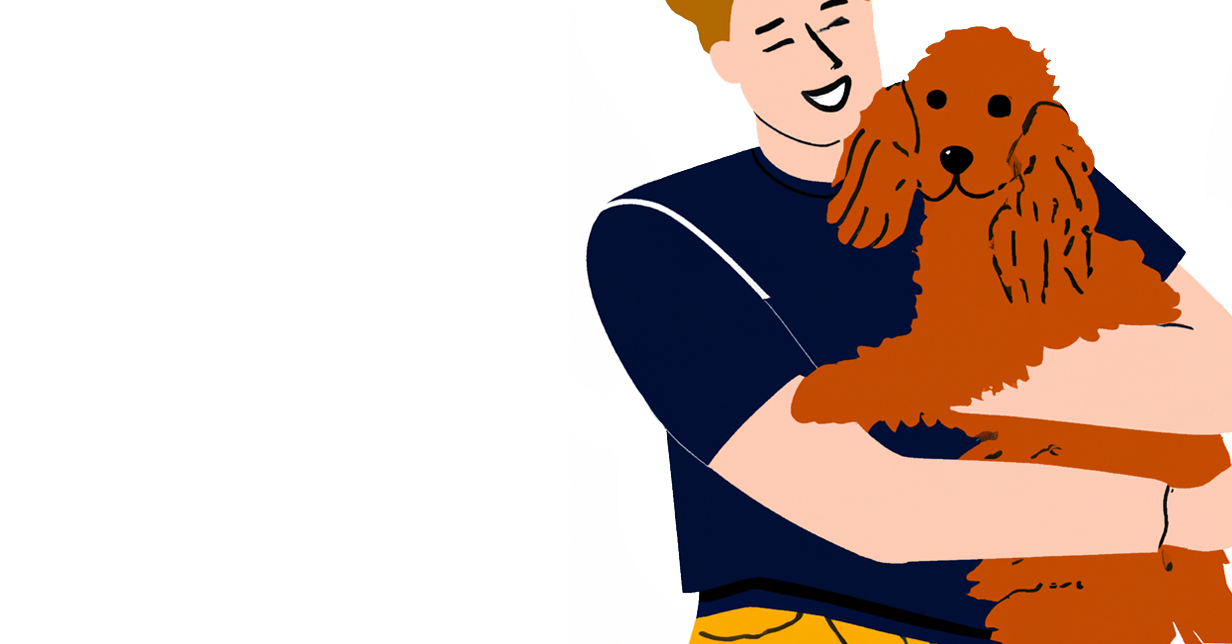
How to Care for Your Dog While Working Full-Time
Share
Balancing a full-time job with dog care can be challenging. Leaving your dog alone during the day often brings feelings of guilt and worry about their well-being. However, with the right strategies, it’s possible to ensure your dog’s physical and emotional needs are met, even on a busy schedule.
This guide offers practical tips to help you care for your dog while working full-time, from maintaining a routine to finding support like dog walkers or daycare. With these solutions, you can keep your dog happy and healthy while managing your career.
Can Dogs Be Left Alone During the Workday?
Leaving a dog home alone while working full-time is a common concern for pet owners. While it’s possible for dogs to adapt, their ability to stay alone depends on several factors.
General Guidelines for Alone Time
- Adult Dogs: Most adult dogs can handle being alone for 4–6 hours. They have better bladder control and are generally more independent.
- Puppies: Puppies need more frequent attention due to their smaller bladders and ongoing training. They should not be left alone for more than 1–2 hours at a time.
Factors That Affect Alone Time
- Age: Younger dogs and seniors require more care and attention than healthy adults. Puppies need potty breaks, while older dogs may have health issues that limit their ability to stay alone.
- Breed and Energy Level: High-energy breeds, like Border Collies or Jack Russell Terriers, often need more exercise and mental stimulation, making it harder for them to stay alone for long periods.
- Training and Temperament: Dogs with strong training and calm temperaments are better equipped to handle being alone. On the other hand, dogs with separation anxiety or behavioral challenges may struggle significantly.
Understanding these factors can help you set realistic expectations and create a plan to ensure your dog stays comfortable and safe during your workday.
Understanding Your Dog’s Needs
Meeting your dog’s needs is essential to their health and happiness, especially when you’re working full-time. Addressing their physical, mental, and social requirements helps prevent stress and ensures your dog thrives even when left alone during the day.
Essential Needs for Your Dog
- Physical Exercise: Dogs need regular walks, playtime, and bathroom breaks to stay healthy and active. Lack of exercise can lead to pent-up energy and destructive behaviors.
- Mental Stimulation: Keep your dog engaged with interactive toys, puzzles, or training challenges. Mental enrichment prevents boredom and reduces anxiety while you’re away.
- Social Interaction: Dogs are social animals and need connection to feel secure. Without proper interaction, they may develop separation anxiety or feelings of loneliness.
Signs of Stress in Dogs Left Alone Too Long
When dogs are left alone for extended periods without their needs met, they may exhibit signs of stress, including:
- Excessive barking or whining.
- Destructive chewing or digging.
- Loss of appetite or overeating.
- Pacing or repetitive behaviors.
- Lethargy or withdrawal.
Recognizing these signs early allows you to adjust their routine and provide the care they need to stay happy and stress-free.
Strategies for Caring for Your Dog While Working 9-5
Taking care of a dog while managing a full-time job can be challenging, but there are effective ways to meet your pet’s needs and ensure their happiness during your workday.
Hiring a Dog Walker or Pet Sitter
A dog walker or pet sitter can make a big difference in your dog’s day. Midday walks provide much-needed exercise and bathroom breaks, while a pet sitter offers companionship to reduce loneliness and stress. This is especially helpful for dogs who thrive on interaction and routine.
Dog Daycare Options
Dog daycare facilities provide a safe and stimulating environment for your pet. These centers offer structured activities, playtime with other dogs, and rest periods under the supervision of trained staff. Benefits include improved socialization, regular exercise, and professional care to keep your dog entertained and healthy.
Using Technology to Stay Connected
Modern technology makes it easier to care for your dog, even when you’re away. Pet cameras allow you to check in on your dog remotely, and some devices even let you interact with them using two-way audio or treat dispensers. Automatic feeders and smart toys keep your dog engaged and ensure they stay mentally stimulated throughout the day.
Providing Interactive Toys and Enrichment
Interactive toys and puzzles can help your dog stay occupied and mentally stimulated. Consider options like treat-dispensing toys, puzzle feeders, or durable chew toys to keep your dog entertained and prevent boredom. These activities help reduce stress and encourage problem-solving skills.
Adjusting Your Daily Routine
Your routine plays a key role in your dog’s well-being. Start the day with a morning walk or play session to burn off energy before you leave. Ensure feeding and bathroom breaks occur at consistent times to create a predictable schedule. In the evening, another walk or playtime can help reinforce bonding and relaxation after a long day apart.
By combining these strategies, you can create a supportive and engaging environment that keeps your dog happy and healthy, even with the demands of a 9-to-5 schedule.
Setting Up a Comfortable Home Environment
Creating a safe and engaging home environment is essential for your dog’s comfort while you’re at work. A well-prepared space can help reduce stress and ensure your dog feels secure.
Designate a Cozy Space
Provide a specific area where your dog can relax during the day. Include a comfortable bed, favorite toys, and blankets to create a soothing space they can call their own.
Use Calming Tools
Consider tools like white noise machines to block out external sounds that might cause anxiety. Treat dispensers or slow-feeding toys can provide both entertainment and comfort.
Block Off Unsafe Areas
Use baby gates or closed doors to prevent your dog from accessing hazardous areas, such as the kitchen or stairs. This ensures their safety and gives you peace of mind.
Addressing Special Cases
Puppies
Puppies need extra attention, especially when house-training. Set up a routine for bathroom breaks, and use puppy pads or crate training to establish good habits. Enrichment toys can keep their curious minds occupied while you’re away.
Senior Dogs
Older dogs may require softer bedding, easy access to water, and more frequent bathroom breaks. Monitor their health and comfort, as they may have mobility issues or medical needs that require adjustments to their environment.
High-Energy Breeds
Active breeds like Border Collies or Retrievers need more physical and mental stimulation. Incorporate interactive toys, puzzle feeders, or even a treadmill session to help burn off excess energy before and after work.
Building a Strong Bond Despite a Busy Schedule
Maintaining a close bond with your dog is essential, even with a demanding job. Quality time strengthens your relationship and reassures your pet of their importance in your life.
Evening Walks or Playtime
Dedicate time after work for a walk or play session. This not only provides exercise but also reinforces your bond.
Weekend Adventures
Use weekends to explore dog-friendly parks or hiking trails. These outings give your dog new experiences and plenty of attention.
Training Sessions
Short training sessions in the evening or on weekends can engage your dog mentally and improve their behavior. Positive reinforcement strengthens trust and creates lasting memories.
By addressing your dog’s specific needs and prioritizing quality time, you can ensure they feel loved and cared for, even with a busy schedule.







